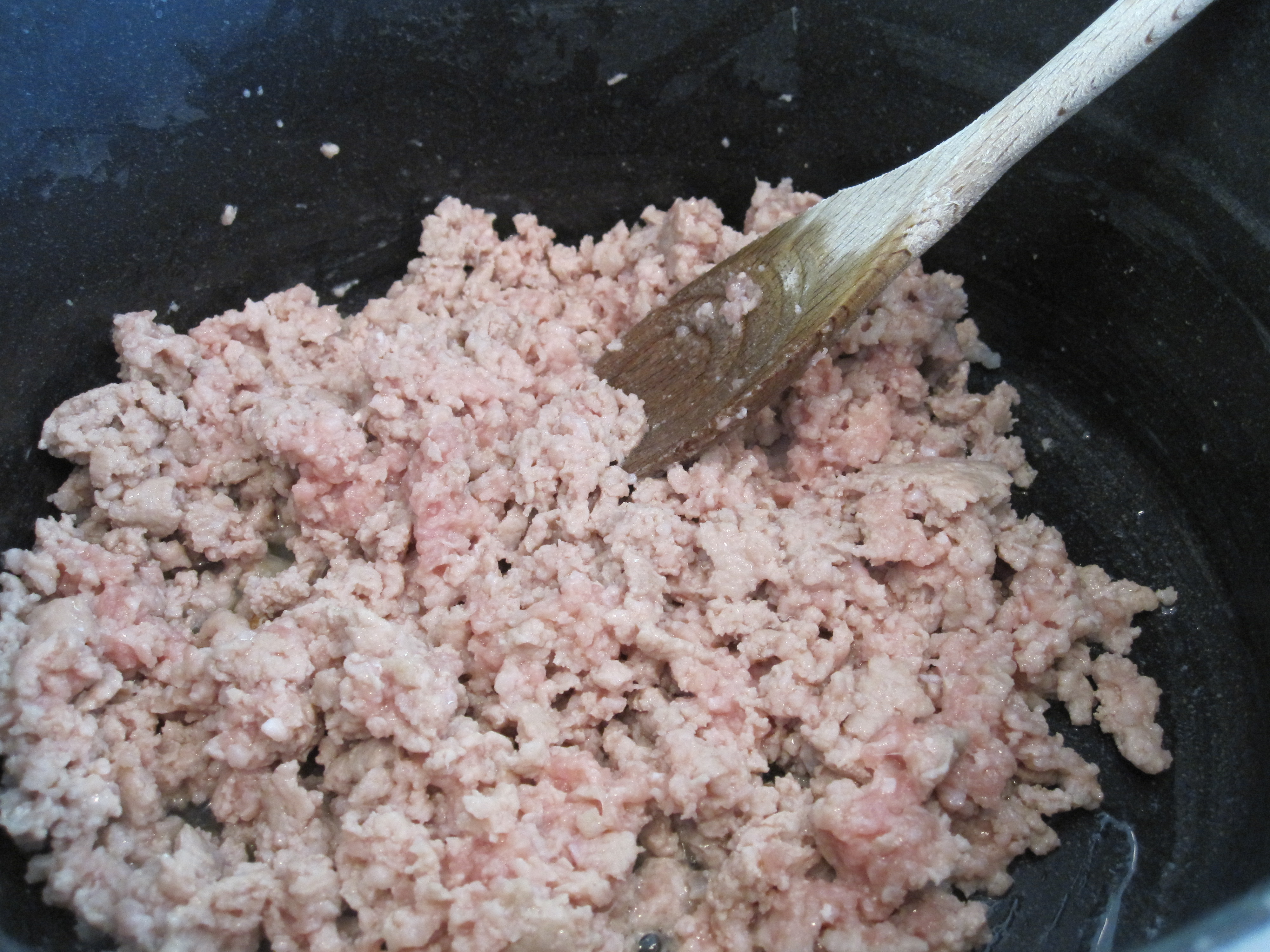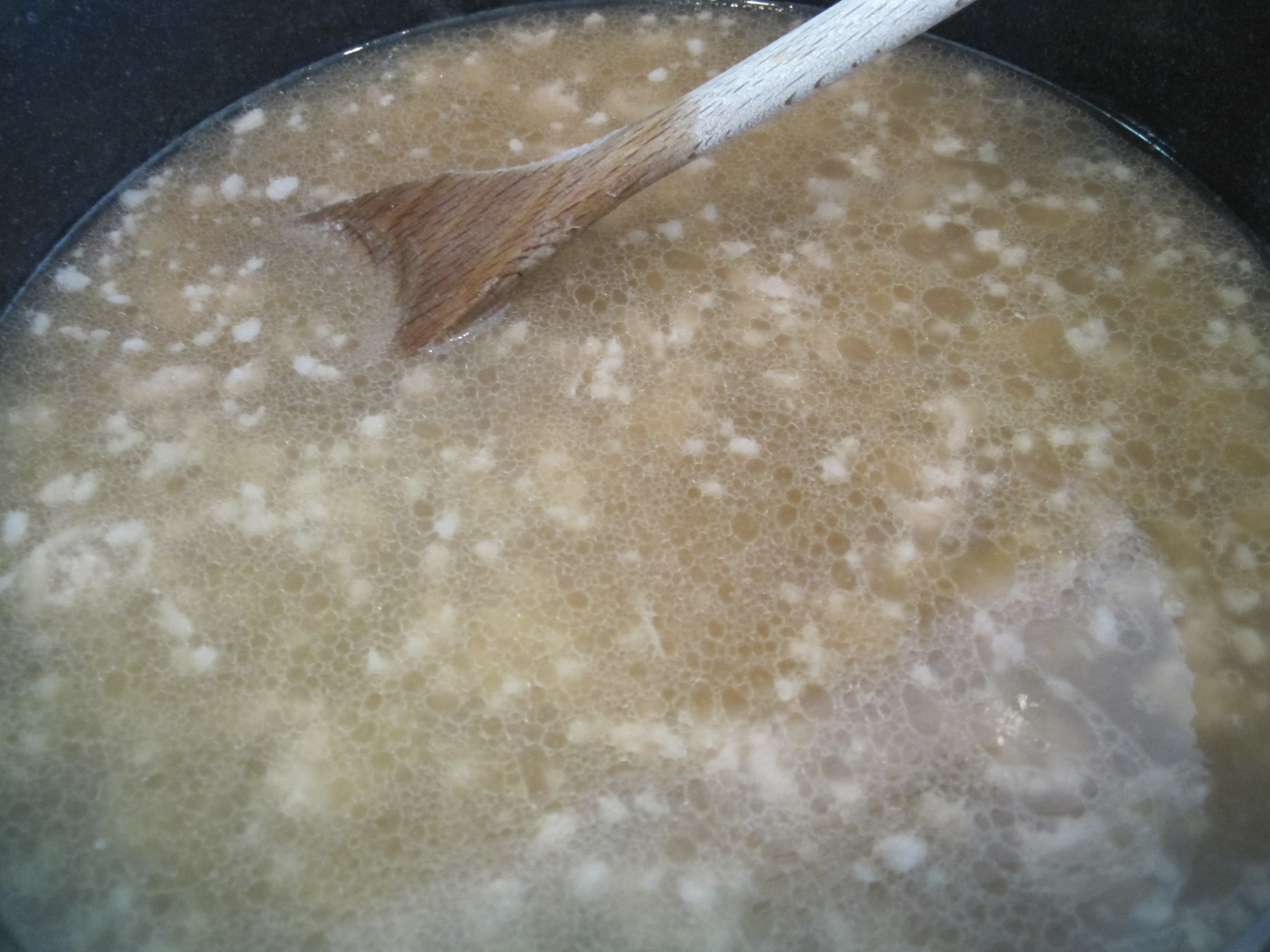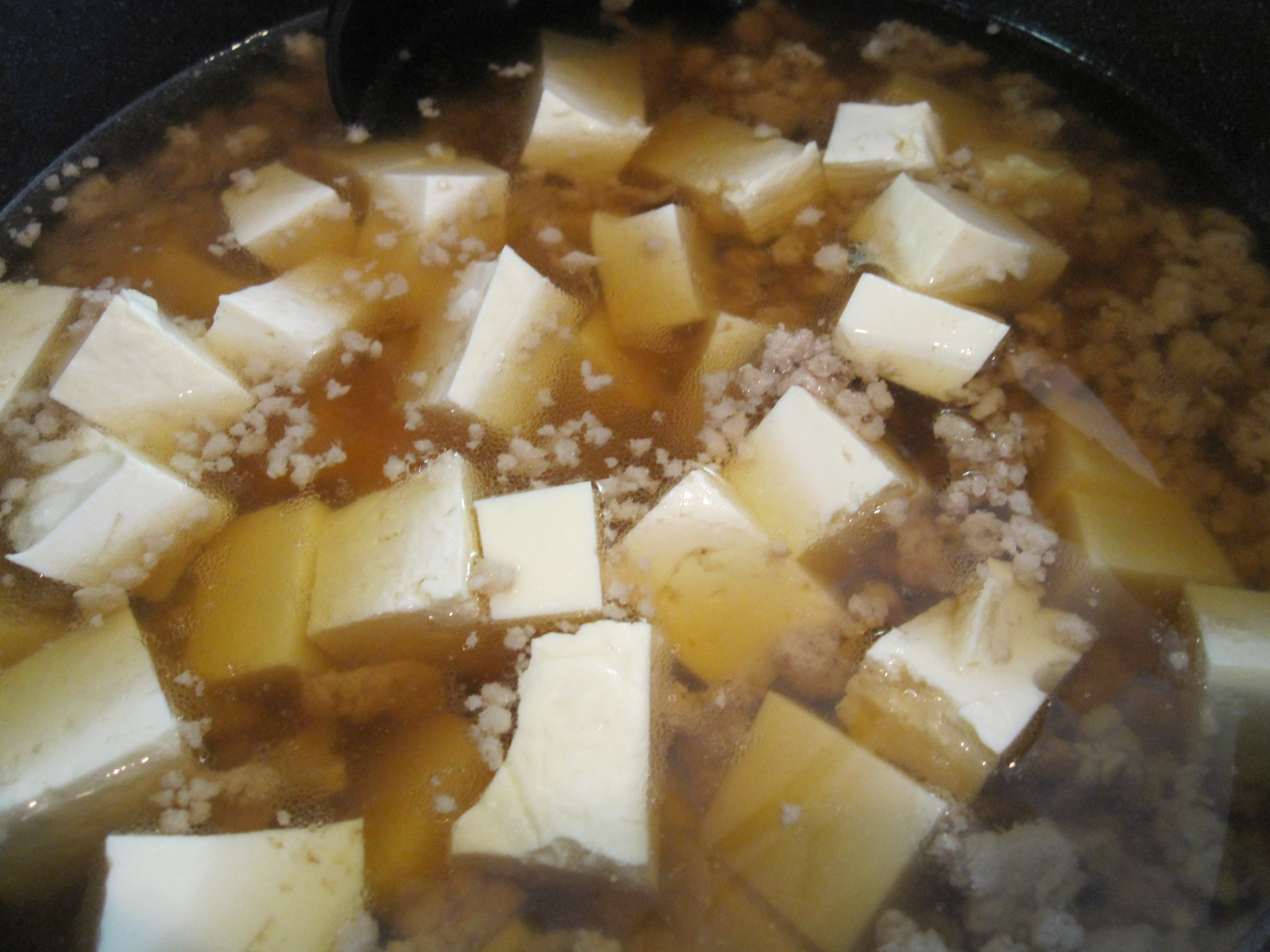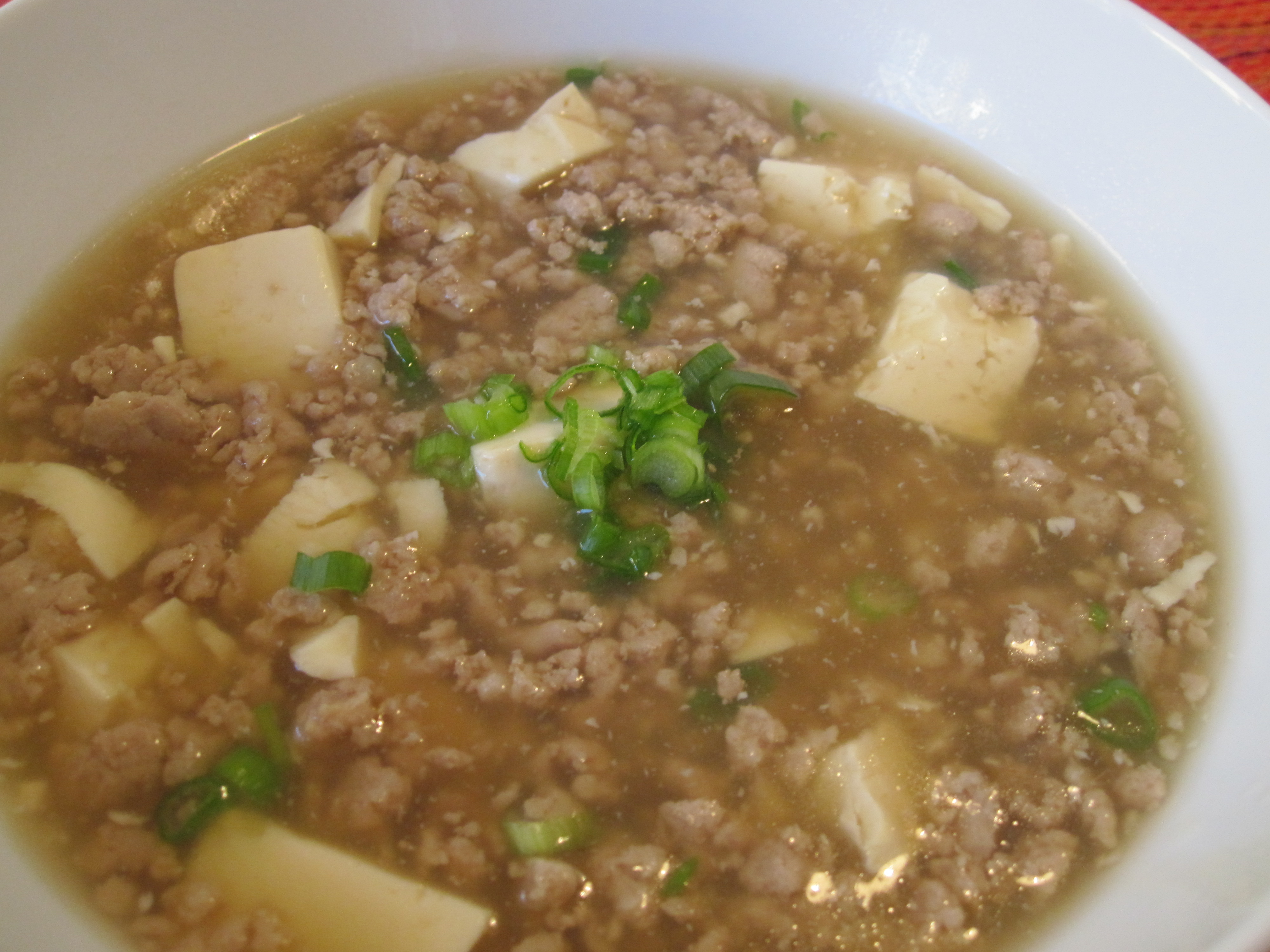My Moms Japanese Mabo Tofu
I’m a victim of fraud!
This isn’t how I wanted to start my day nor my post on mabo tofu but that’s just how it is. I never thought it would happen to me, but apparently it’s not uncommon. I use my Bank of America issued pink and white Hello Kitty debit card everywhere. I love my cute Hello Kitty card… I usually don’t carry much cash with me and rely on my debit card for even the smallest $3 purchases. I use it for groceries, gas, restaurants, and almost all financial transactions, even online purchases, which might not be the smartest thing to do in hindsight.
The good thing, is that every few days I go online to review our accounts and this morning I noticed an ATM withdrawal in the amount of $480. The amount itself was odd, since I rarely ever withdraw more than $20 in cash, but when I read the details of the transaction, it appeared a thief withdrew cash from an ATM in Camden, New Jersey yesterday! As many of you know, I am in Southern California and basically haven’t left the area since I was pregnant with Bebe E! I immediately checked my wallet to make sure I still had my Hello Kitty debit card in my possession and I did indeed.
Next, I called the bank to notify them of this fraudulent transaction and they were savvy enough to deny subsequent ATM withdrawals immediately after the initial withdrawal. Yes, the thief attempted to withdraw even more cash but the bank declined their request. Apparently, the thief also attempted to make purchases but the bank also declined these requests.
According to Bank of America, thieves make fake cards all the time. The issue, however, was 1) how did they get my debit card account number and 2) how did they get my PIN number?!? I was asked a series of questions by the bank representative, but he asked me three times whether my PIN number was written anywhere. I told him that I’ve had the same PIN number for the past 10 years and I’ve never had a need to store it anywhere but IN MY HEAD! I asked if I should change my PIN number periodically, and he said that wasn’t likely the problem. *Sigh.*
While the bank will refund the money that was stolen from my account within 24 to 48 hours, this experience has left a bitter taste in my mouth and makes me think twice about all of the electronic transactions I make, and it also makes me a little paranoid about entering my PIN in public. You never know whose looking over your shoulder, even from a distance, or possibly even cyber-snooping around looking for information to steal!
Be aware!
Don’t be a victim of credit/debit card fraud or identify theft. Sometimes, even if you’re careful, which I thought I was, you can still become a victim. I’ve been reading some articles that I Googled about fraud protection and I’m definitely going to be more paranoid and even more careful in the future, despite the fact that my story ends positively since the money that was stolen is insured by my bank. Monitor your accounts regularly for unauthorized use of your credit or debit cards!
Let’s move on to the post I originally intended to share with all of you about my mom’s mabo tofu recipe….
*****************************************************************
Often times when I cook, I don’t use a recipe. I’m sure many of you out there can relate to this. My mom cooks the same way, but her “no recipe” style of cooking has often been a challenge for me as I try to recreate my favorite dishes that my mom made for us when I was a child. For the purposes of my family cookbook project, i.e. Bebe Love Okazu blog, I’ve patiently measured ingredients as I cooked and took notes whilst following my mom’s “no recipe” instructions over the phone. My mom’s Japanese version of the classic Chinese Mabo Tofu dish is one of them.
I have to admit that I am an avid fan of instant mabo tofu out of the pouch. My brand of choice is House Food’s Amakuchi (Mild) Mabo Tofu. I buy several boxes when I find it on sale at Marukai supermarket. This mabo tofu is great for when I don’t have time and need a really quick and easy dinner. We almost always have frozen ground pork in the freezer and blocks of tofu in the fridge, so instant mabo tofu is a go-to dish when I’m tired and I don’t feel like cooking.
For a vegetarian alternative, try instant mabo tofu mix with eggplant. Sometimes if I’m craving eggplant I’ll make mabo-eggplant and sometimes I’ll add tofu to this for a lighter, no-meat alternative. It’s definitely worth trying, you won’t be disappointed.
Several months ago, my brother requested that I make our mom’s mabo tofu and share her recipe. I told him that I don’t make my mom’s mabo tofu since I always just use the instant stuff in the pouch/box. Shame on me. I should make my mom’s mabo tofu more often. It’s definitely healthier since it doesn’t contain a bunch of additives and ingredients I can’t pronounce! Well, two weeks ago I finally made my mom’s homemade Japanese style mabo tofu. It had been over eight years since I made this and I had to call my mom for a “refresher” on our family’s mabo tofu.
I was a bit concerned whether Bebe Dada would like my mom’s Japanese take on the classic Chinese mabo tofu dish since he grew up eating his mom’s Chinese cooking. My mom’s recipe drastically differs from traditional Chinese mabo tofu, but it’s good. Just different. When I made this, Bebe Dada came home and immediately said, “Mmm, dinner smells really good. What is it?” I didn’t want him to have any preconceived ideas of what mabo tofu should taste like, whether it was the instant stuff we usually ate out of the box, or the mabo tofu of his childhood, so I told him we were having ‘Japanese pork soup’. It turns out he likes it and it made me realize just how much I missed this dish.
Japanese Mabo Tofu
- 5 to 6 cups water
- 2 cups chicken broth (1 16 oz can)
- 1 pound ground pork
- 1 package soft or medium firm tofu, cubed
- 1 small garlic clove, quartered
- 1 teaspoon chopped ginger
- Roughly 1 tablespoon canola oil
- 1/2 tablespoon sesame oil
- 2 1/2 tablespoons shoyu (soy sauce)
- 2 to 4 tablespoons potato starch (or cornstarch)
- 1 – 2 tablespoons water for mixing with starch
- 2 stalks chopped negi (green onions)
- Shichimi togarashi (Japanese chili flakes) for garnish
- Rayu (Japanese chili oil) for garnish
- Cooked brown rice
1) In a large pot, heat canola and sesame oil with garlic oil over medium heat. For this dish, I like to keep the garlic pieces large so that they don’t impart a strong garlic flavor. After the garlic infuses the oil (1 – 2 minutes), remove the garlic and discard. Or if you prefer, keep the garlic! Add chopped ginger and ground pork and cook until mostly done. Don’t brown the meat. Drain oil. (Note: Sometimes I’ll use Japanese grated ginger sold in a squeeze tube. I add the ginger after I’ve added the water and chicken broth.)
2) Add water and chicken stock. The chicken stock is optional. I had a few cans of low-sodium chicken stock in the pantry so I experimented by adding one can and the broth was exceptionally delicious. If you have chicken stock available, give it a try, otherwise just use water but you may need to add extra soy sauce.
3) Allow the pork to slowly come to a boil on medium-high heat. Skim fat and residue from the broth and discard. Lower the heat to medium-low and allow to simmer for 15 – 30 minutes. I wasn’t really paying attention to the time since I was trying to feed Bebe E but I believe the longer you simmer this, the greater the flavor.
4) Add tofu (I always use soft) and bring to a boil. Add shoyu (soy sauce).
5) Mix potato starch (or corn starch) with cold water and add to the boiling pot. Gently stir until broth thickens. My mom usually made the broth more soupy versus starchy. I would recommend starting with 2 tablespoons of starch and check the thickness. If you prefer the broth thicker, add more cornstarch. Finally, add a few green onions and stir.
Serve in large bowl, garnish with additional green onions and spices (togarashi and rayu). Add more soy sauce for flavor if you prefer.
My mom’s Japanese mabo tofu has no spices. I imagine she made it this way for us because it was easier for us to eat as kids. As we grew up, we would add shichimi togarashi and/or rayu to make our mabo tofu spicier. I should also mention that we grew up eating this with rice on the side, but my brother and I usually just ended up dumping our rice in the bowl of mabo tofu and eating,”soupy rice?”
Bebe Dada loved this dish. He said it was delicious, although he didn’t dump his rice in the bowl, I couldn’t help but throw in a few bites of rice into my bowl, for old times sake.
Itadakimasu,
bebe mama
- 5 to 6 cups water
- 2 cups chicken broth (1 16 oz can)
- 1 pound ground pork
- 1 package soft or medium firm tofu, cubed
- 1 small garlic clove, quartered
- 1 teaspoon chopped ginger
- Roughly 1 tablespoon canola oil
- ½ tablespoon sesame oil
- 2½ tablespoons shoyu (soy sauce)
- 2 to 4 tablespoons potato starch (or cornstarch)
- 1 - 2 tablespoons water for mixing with starch
- 2 stalks chopped negi (green onions)
- Shichimi togarashi (Japanese chili flakes) for garnish
- Rayu (Japanese chili oil) for garnish
- Cooked brown rice
- In a large pot, heat canola and sesame oil with garlic oil over medium heat. For this dish, I like to keep the garlic pieces large so that they don't impart a strong garlic flavor. After the garlic infuses the oil (1 - 2 minutes), remove the garlic and discard. Or if you prefer, keep the garlic!
- Add chopped ginger and ground pork and cook until mostly done. Don't brown the meat. Drain oil. (Note: Sometimes I'll use Japanese grated ginger sold in a squeeze tube. I add the ginger after I've added the water and chicken broth.)
- Add water and chicken stock. The chicken stock is optional. I had a few cans of low-sodium chicken stock in the pantry so I experimented by adding one can and the broth was exceptionally delicious. If you have chicken stock available, give it a try, otherwise just use water but you may need to add extra soy sauce.
- Allow the pork to slowly come to a boil on medium-high heat. Skim fat and residue from the broth and discard. Lower the heat to medium-low and allow to simmer for 15 - 30 minutes.
- Add tofu (I always use soft) and bring to a boil. Add shoyu (soy sauce).
- Mix potato starch (or corn starch) with cold water and add to the boiling pot. Gently stir until broth thickens. My mom usually made the broth more soupy versus starchy. I recommend starting with 2 tablespoons of starch and check the thickness. If you prefer the broth thicker, add more cornstarch.
- Finally, add a few green onions and stir.
- Serve in large bowl, garnish with additional green onions and spices (togarashi and rayu). Add more soy sauce for flavor if you prefer.







14 Comments